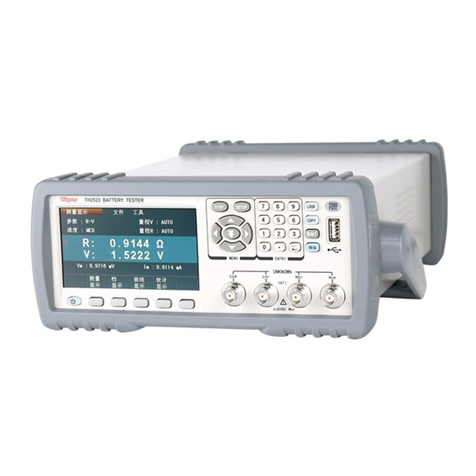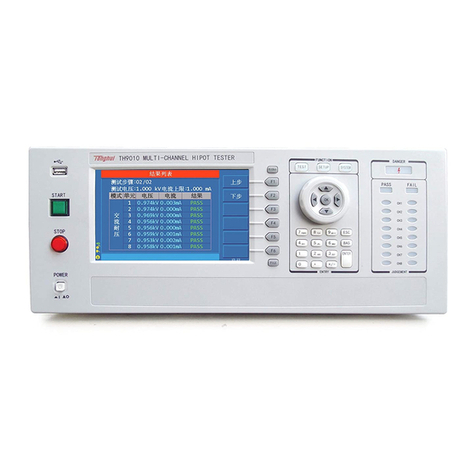
8.3 Measurement accuracy ............................................................................................. 121
8.3.1 Accuracy of│Z│,│Y│, L, C, R, X, G, B ......................................................... 121
8.3.2 D accuracy ........................................................................................................ 121
8.3.3 Q accuracy ........................................................................................................ 122
8.3.4 Θ accuracy ........................................................................................................ 122
8.3.5 G accuracy ........................................................................................................ 122
8.3.6 Rp accuracy ...................................................................................................... 122
8.3.7 Rs accuracy ...................................................................................................... 123
8.3.8 DCR accuracy .................................................................................................. 123
8.3.9 Lk accuracy ...................................................................................................... 123
8.3.10 Turns Ratio accuracy ........................................................................................ 123
8.3.11 Accuracy factor ................................................................................................ 124
8.4 Safety requirement ................................................................................................... 127
8.4.1 Insulation resistance ......................................................................................... 127
8.4.2 Insulation intensity ........................................................................................... 128
8.4.3 Leakage current ................................................................................................ 128
8.5 Electromagnetic compatibility ................................................................................. 128
8.6 Performance test ....................................................................................................... 128
8.6.1 Working condition ............................................................................................ 128
8.6.2 The used instruments and devices .................................................................... 128
8.6.3 Function check ................................................................................................. 129
8.6.4 Test signal level ................................................................................................ 129
8.6.5 Frequency ......................................................................................................... 129
8.6.6 Measurement accuracy ..................................................................................... 129
8.6.7 Accuracy of C and D ........................................................................................ 129
8.6.8 Accuracy of L ................................................................................................... 130
8.6.9 Accuracy of Z ................................................................................................... 130
8.6.10 Accuracy of DCR ............................................................................................. 130
Chapter 9 Command Reference ................................................................................................ 132
9.1 GPIB Common Commands ...................................................................................... 132
9.2 SCPI Command ........................................................................................................ 133
9.2.1 DISPlay subsystem commands ........................................................................ 135
9.2.2 FREQuency subsystem commands .................................................................. 136
9.2.3 VOLTage subsystem commands ...................................................................... 136
9.2.4 CURRent subsystem commands ...................................................................... 137
9.2.5 AMPLitude subsystem commands ................................................................... 137
9.2.6 OUTPut subsystem commands ........................................................................ 138
9.2.7 BIAS subsystem commands ............................................................................. 138
9.2.8 TRIGger subsystem commands ....................................................................... 140
9.2.9 AMPLitude Auto Level subsystem commands ................................................ 141
9.2.10 Output RESister Internal Resistance subsystem commands ............................ 141
9.2.11 FUNCtion subsystem commands ..................................................................... 141
9.2.12 COMParator subsystem commands ................................................................. 145
9.2.13 LIST subsystem commands ............................................................................. 148



































